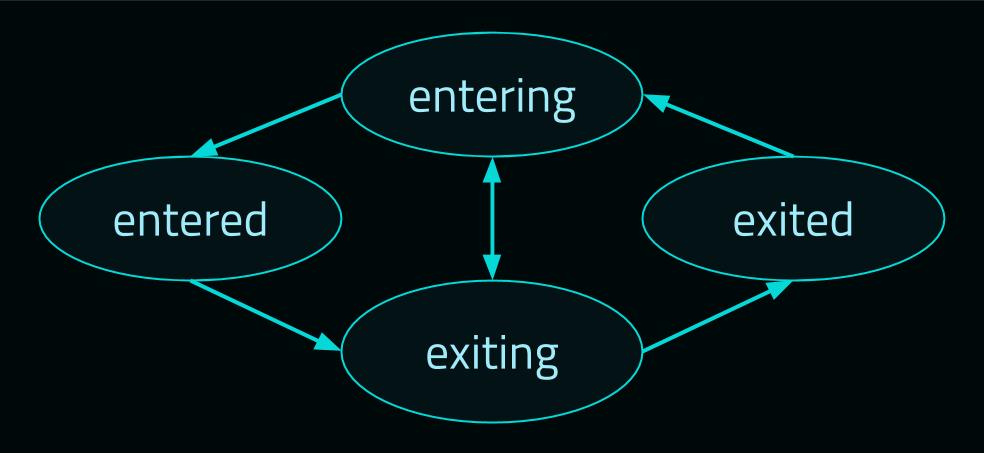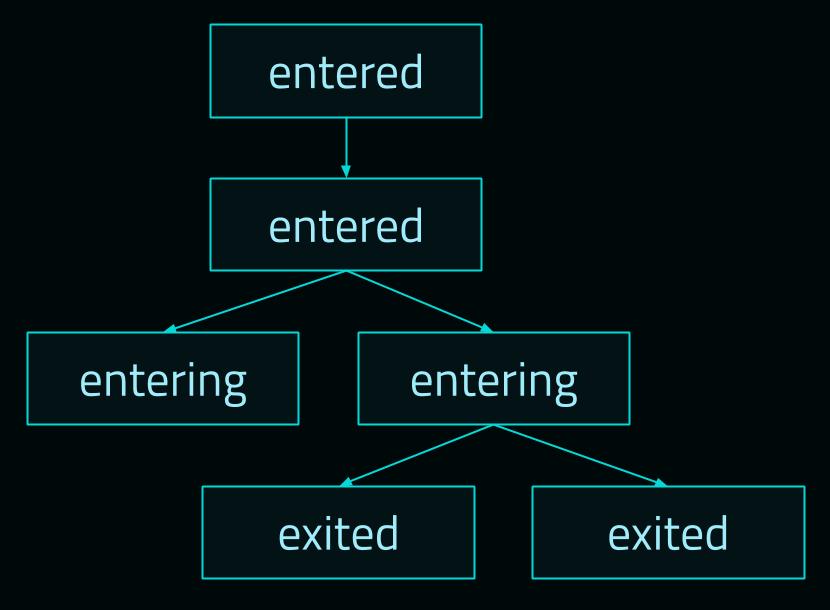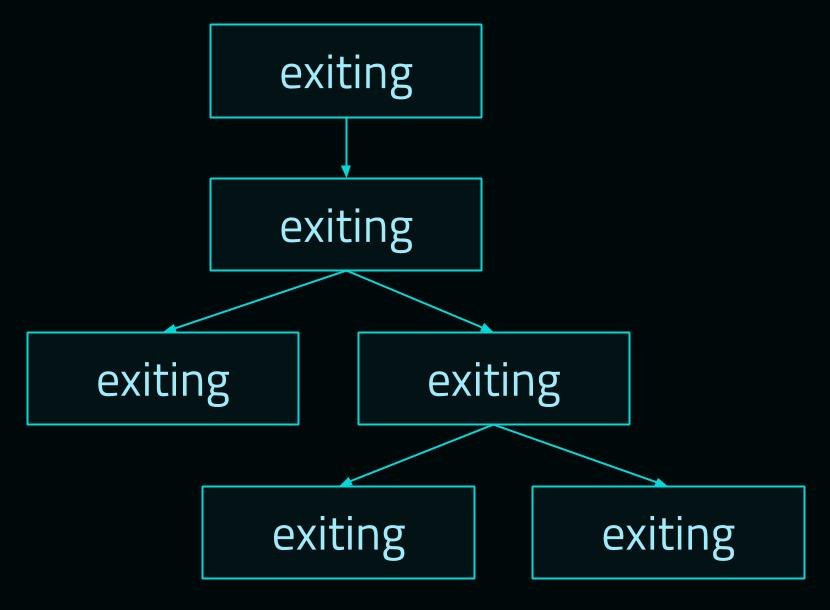States
Arwes futuristic science fiction user interfaces have assembling/creating/building and disassembling/destructing/demolishing user experiences. To manage this workflow, systems have UI states according to the application and user events. These states determine the nodes design, animations, and sounds configuration changes.
Since the state transitions from one state to another throughout the user experience, it is referred as the system "flow". Normally, the flow goes from one node to another in the system hierarchy.
An UI mounted node in a system can have 4 states:
- Exited: Transitioned out. If a node is animated, this is its initial state. If a node is animated and it is going to be removed, this should be its final state. The node component should be invisible.
- Entering: Transitioning in. The node component is being assembled to be visible.
- Entered: Transitioned in. If a node component is not animated, this will be always its state. The node component should be completely visible.
- Exiting: Transitioning out. The node component is being disassembled to be invisible to the user.
Transitions
Due to events, a node can have the following state transitions:
- From exited to entering when assembling.
- From entering to entered when assembled.
- From entering to exiting when in the middle of assembling, it is cancelled so the flow is reversed.
- From entered to exiting when disassembling.
- From exiting to exited when disassembled.
- From exiting to entering when in the middle of disassembling, it is cancelled so the flow is reversed.

Other transitions should not be permitted.
When an node transitions in, it should be assembled. It should feel as being created part by part. A simple line will start as a point and get its final length over a short period of time. Opacity can be used from 0 to 1 while animating but should last very short in the beginning of the animation.
When a node transitions out, it should be disassembled. It should feel as if it is being unmounted part by part. A simple line will shrink until it is a point in a short period of time. Opacity can be used from 1 to 0 while animating, but should last very short at the end of the animation.
Before a node component is removed or unmounted from the UI, it should be completely disassembled.
Nodes components transitioning in and out can have a sound effect lasting the time the animations take.
The animations and sounds in the transitions should attract minimum attention from the user. Just enough to let the user know there is a change in the application.
When a system transitions in, nodes should transition in by their order of hierarchy. From parent nodes to children nodes. For example, first backgrounds, then structural frames, then containers, and finally content. All nodes in the same level start transitioning in at the same time and should take the same duration.

When a system transitions out, all nodes regardless of their level in the hierarchy, should start transitioning out at the same time and should take the same duration.

All nodes in a system should support being animated or not. A non-animated node should not have transition animations nor sounds. The nodes components should handle all the design styling for each case.
By default, a node should have enabled animations and sounds if configured. These settings are inherited by children nodes.
A system can take as many levels as needed. It is recommended to have as few as possible with short transition durations.
Persistency
Normally, a node component should take short durations in the transitions and long durations when they are completely assembled (or disassembled if needed), as expected from any UI application.
Once a system is assembled, it can run randomly subtle passive animations on its nodes regularly with very optional sounds or background sounds such as music.
Lines in a rectangular container can glow momentary in a system. A background can be animated the whole time with subtle changes, and low dim music can be played in the duration of the system.
But these animations and sounds should not be intrusive. User should not be distracted from primary content.
Performance
The nodes in a system can all be mounted at start time with animations and sounds enabled. They will be created with exited state. Then the flow can start from the root node to assemble the nodes components.
A node can also exist in the system in exited state, not unmounted for certain purposes. This is not a recommended practice.
This situation can out of control if multiple expensive node components are exited but not unmounted. If they are not assigned to tasks in this state, they should be removed to prevent "zombie components" wasting the machine resources.
Since a rich Arwes system may even involve hundreds of thousands of components, a special focus on performance is required when developing Arwes applications.

